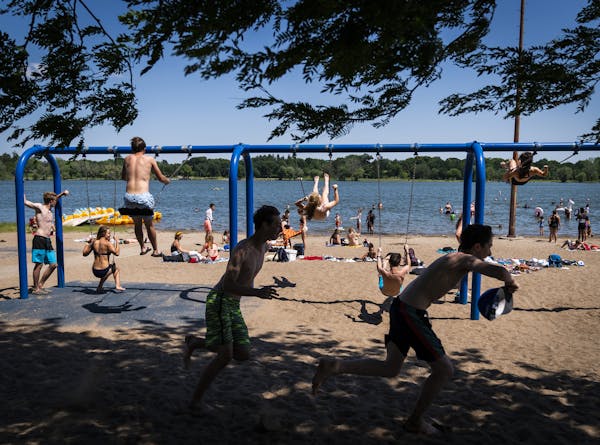Nineteen deaths and an additional 387 COVID-19 cases were announced by the Minnesota Department of Health Thursday.
That brings the total number of fatalities caused by the pandemic to 1,344. About 80% of the deaths have been among residents of long-term care facilities, including 13 of the deaths announced Thursday.
A total of 31,675 Minnesotans are known to have the new coronavirus
Mower County has emerged as a new hot spot for confirmed cases, with more than 80 additional infections detected this week for a total of 744 cases since the pandemic began.
"In this case we are seeing that there has been activity both in the community as well as related to a couple of large employers in the area," said Kris Ehresmann, infectious disease director at the Minnesota Department of Health.
The county is home to two meat processing plants.
"Recognizing that there is both workplace potential for exposure as well as activity in the community, the testing is being expanded," she said. Testing will be offered this week in Austin.
So far, nearly 460,000 COVID-19 tests have been performed statewide, including 12,465 reported as of Wednesday. Due to a reporting glitch, Wednesday's announcement of nearly 19,500 daily tests was overstated and included some tests that had been run Saturday through Monday.
HealthPartners said Thursday that this week it has run tests for more than 50,000 patients since they started testing in March.
That included about 8,000 asymptomatic people who were tested after the protests and community gatherings in the wake of George Floyd's May 25 killing. About 1% of these people tested positive — consistent with findings reported by state health officials.
About 12% of all COVID-19 confirmed cases in the state have required hospitalization since the pandemic began. There are 345 hospital patients, a decrease of six since Wednesday, with 10 fewer patients in intensive care for a total of 171.
Most people who need hospital-level care have underlying health conditions, including heart, kidney or lung disease, that make it difficult for them to recover from COVID-19 complications.
Although the number of people needing intensive care due to COVID-19 complications has been decreasing, the state's supply of intensive care beds has been tightening as more hospitals are scheduling elective surgeries that had been delayed during the beginning of the pandemic.
"This is not an atypical summer pattern," Minnesota Health Commissioner Jan Malcolm said Wednesday. "We've seen a pretty sizable shrinking of hospital capacity for many years now. That has left the system with less surge capacity."
State health officials are already planning for the fall and winter flu season, which can also place a strain on the hospital system, with public health campaigns to increase flu vaccination rates.
The concern is that a possible second wave of COVID-19 cases could occur at the same time that the flu hits the state.
Many people who contract COVID-19 have mild symptoms and do not require hospital care. So far, 27,566 people have recovered and no longer need to be isolated.
Glenn Howatt • 612-673-7192
New Minnesota GOP leaders seek peace with party's anti-establishment wing

Who is Republican Lisa Demuth, Minnesota's first House speaker of color?

Minnesota House GOP, Secretary of State Steve Simon return to Supreme Court
Supreme Court sides with DFL and Simon, says 68 House members needed for floor action

